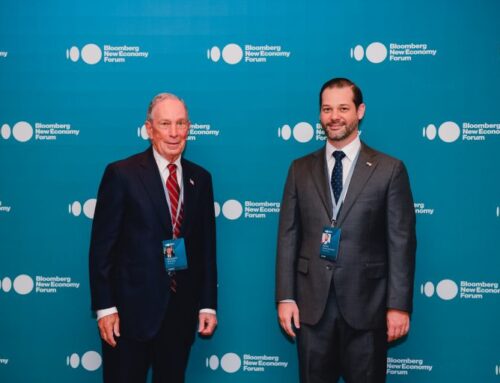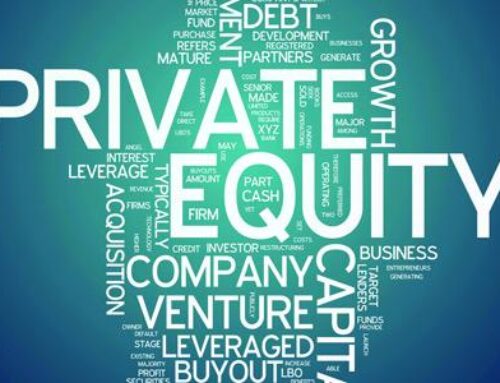Since I last wrote a Report from Panama in June and the brief update in October, the transition between the old administration and the newly-elected administration is over, the outline of new development scheduled for the next few years is being studied while unfinished projects from earlier are completed, and finally the first statistics are coming in that help indicate where
we are now.
I stay quiet during this period every five years. It takes time to sort things out. But above all, I like to have at least some preliminary statistics available. Elections are held at the beginning of July, so July is a real transition month. Since then three months have been added through the
end of October in official statistics and we can begin to look for changes, if there are any, following the political transition. Naturally, we will know more every month to come.
As you know, I normally send a short letter with a link to a PDF. Now I will try sending shorter reports entirely in letters, but I will still provide a PDF version for those who prefer it (you are reading it). So let’s get on with it!
In my much longer June 2019 report, I discussed the recession that faced Panama, although its economy is still among the fastest-growing in Latin America. The problem was a “split” between the macro-economy of the huge logistics platform with the Canal, the second-largest Free Trade Zone in the world, a rapidly growing air “hub”, a new Metro system that keeps growing, and a list of large projects from a new convention center to a new cruise ship port on the Pacific side and so much more, and on the other hand, the micro-economy on which many in our middle class depends for their incomes.
The real estate and “hospitality” (hotels, restaurants, casinos, etc.) sectors have been and remain in a severe slump that hit the working and middle classes especially hard. When incomes are down or threatened, people in many nations pull out their credit cards and continue to spend to maintain their lifestyle. Foreign residents from nations all over the planet do the same in Panama, but middle-class Panamanians are less likely to do that. Instead of increasing their debt, they often do something very strange. They spend less.
The Micro Level
The current recession can be seen as starting to build a few years ago. Although we were not aware that a recession was coming, it was impossible not to notice that the monthly sales of new cars were falling month after month, year after year, especially the category of “regular cars”, the kind middle-class people buy most often. I identify in June a dramatic drop in sales of “regular” cars, those most likely to be purchased by the middle class. There has been a distinct shift. This is best demonstrated by showing you the change from each year to the next one focused on regular cars.
If I had included SUVs and luxury cars, it would look even better, but I am more concerned with those with fewer resources. They stopped buying. They are beginning to buy again. That is the story and it is a big one, the first good news in the car market in a long time. The future will show if this continues, but it looks like a possible “bottom” in auto sales to me. Time will tell.
In keeping this report shorter than the big ones, I am going to leave this as an indicator of micro-economic change. The purchase of a car is the biggest expense other than buying a house for nearly everyone in the middle class, but a good car is also important and people have been holding off buying for much longer than normal. Their return to the market is a powerful early sign.
In keeping this report shorter than the big ones, I am going to leave this as an indicator of micro-economic change. The purchase of a car is the biggest expense other than buying a house for nearly everyone in the middle class, but a good car is also important and people have been holding off buying for much longer than normal. Their return to the market is a powerful early sign.
The Macro Level
At the macro-economic level, some people ask about the “trade war”. Is Panama suffering from that? Not really, not as much as many nations. Our biggest concern in global trade is related to the maritime sector where we have multiple ports, including the busiest in Latin America. Brazil may have more than 50 times our population, but we still handle more shipping.
So here are the results in total tonnage through October. I could use containers, but that means counting empty containers being moved from one port to another too. It is best to focus on tonnage, the real “stuff” that makes up trade.
As you can see, there is nothing all that dramatic to see. From our perspective, Panama does not care if the soybeans come from the US or Brazil. That is someone else’s business, not ours. If you pay your bills, we are happy to serve you!
The last three years are the first full years of the expanded Canal’s operations. Recently, the 8,000th “Neo-panamax” vessel crossed the Canal, more than double the pre-expansion estimates. Before the expansion, none of these ships could fit the Canal. Now the Canal fits them. And a few days ago, the Panama Canal Authority handed the government a ceremonial “check” for $1,786,000,000, representing its share of 2019’s profits, the highest amount in Canal history. Nothing to be ashamed of.
Beyond the “micro” and “macro”, people often ask about Panama’s debt situation. There is growing concern about a massive “debt bubble” created in recent years and still in process in response to the financial crisis that caused major financial damage globally, although very little in Panama.
Well, let me put it this way. First I will show you a graph demonstrating the debt of a nation as a percentage of its Gross Domestic Product, (GDP), or put very simply, their government’s debt as a percentage of their nation’s annual income from all sources, public and private. The stats are provided by McKinsey & Company. They show the results for 51 “advanced” economies as a group and separately for the top ten most indebted nations. I added Panama. This was the graph in June’s report.
Panama has set a goal of not exceeding 40% and stuck with it for some years successfully, as you can see was the case above. If you follow Panama news, you may have heard that the prior administration had done two things that have deeply upset people. First, they put off paying debts to many commercial customers locally and, second, they pushed some major payments into the future to delay their entry into the public record.
It dramatically affected the published debt level. As I reported on the YouTube channel, the new administration audited the situation and dealt with it quickly, transparently, and responsibly. Otherwise, it could have had a serious negative impact on our high credit rating. But even at its worst, it was not as bad as you might think from all the unhappiness here. You can see the “shocking” change in the updated graph below! I will informally call it the “worst-case”.
Yes, I admit it. I was exaggerating a little! Okay, maybe even being a touch sarcastic. In decades past, I remember when today’s self-anointed “advanced” economies really were advanced and most of the others were in sad shape. Those memories are rapidly fading. Who is financially responsible now?
The official percentage is not 45%, by the way. It will be closer to 41%. Some of the remainder that was supposed to have been paid in past years has been assigned statistically to those years. That seems reasonable. It all amounts to the same thing, but I think it is only fair that the administration responsible for this should also be shown as responsible in the statistics.
Once again, Bob, why should I care about all that?
I have worked and lived all over the world for more than five decades. If you have not already found out the “secret” of living in a new nation successfully, let me share it with you. It can be summed up in a single word – stability.
Now, stability does not mean a nation where nothing is happening, and things just continue with little or no change for years. That is a nation that is preparing (or should be) for a great deal of instability.
Ecuador, Nicaragua, Peru, Bolivia, Brazil, Colombia, Guatemala, Argentina, Honduras, and many others, including one of the world’s “failed states”, Venezuela, are not examples of stability. But the real heartbreaker is Chile. We all looked on with horror as the nation collapsed into violence that has not yet completely stopped but has already left 23 dead and at least $2 billion ($2,000,000,000) of destruction of public and private property. The Santiago Metro system suffered $370,000,000 of damage alone.
Latin America is going through a troubled time as it has in decades past. For that matter, China, the US, and Europe sometimes seem trapped in their own troubled times. The whole world seems “troubled”.
We have had some difficult moments in recent months with a lack of transparency in the government as I have described and I haven’t even mentioned that Panamanians are in the early stages of discussing an update and reform of their national constitution, no small matter.
In addition, at the beginning of 2020, President Cortizo will announce the new minimum wage levels that are set after consultation with management, labor, and citizen groups. This year the increase, if there is any, will probably be very modest in light of the economy. We will see soon enough, but keep in mind that we already pay the highest minimum wage in all of Latin America and by a wide margin. As an example, our minimum is seven times the minimum in Mexico.
Panama has its controversies. Of course it does. This is a democracy. There will be more controversy, I have no doubt, but I believe the Panamanian people have more than once proven that they can handle controversy responsibly.
Panama is far from perfect. Once you get to know them, any Panamanian can “bend your ear” for an hour or two on the topic and just be warming up! But when all is said and done, Panamanians are one big family. They can argue serious issues intensely, then smile, laugh, sit down, and share a meal.
What about real estate, Bob?
In the June report, I told you there was a “buyer’s market” in Panamanian real estate and that is still very much the same. Beyond the June report, I refer to it in my YouTube videos frequently. The situation has not changed, even taking into account some early signs of a possible turn in the economy. For people who need to sell, expats included, it is a tough time, but for those who want to buy (or rent), expats included, it remains a very good time.
I look at the real estate market not only for good buying prices but also for good selling prices in the future. I am not going to go into all the detail here as I end up sending out another really long report! Instead, for people interested in that topic, perhaps because they are considering buying or renting in the coming months, I suggest subscribing to my YouTube channel.
But I will say this. I believe the first recovery will come in the Panama City metro area for simple and obvious reasons. As I have mentioned before, this is a “business city”, not only a “tourist city”. The earlier paragraphs describe a small part of the reason why Panama City is a globally-recognized center for businesses. It is not our local market which is very small. We are a transportation, communication, and information “hub” for Latin America and that will be very clear in this coming decade as the strategy for the development of a world-class logistical platform is fully realized. But in truth, it already is clear.
And never forget the one-word businesspeople like to hear when setting up in a foreign nation – stability. You and I are not the only people who prefer that to rioting, looting, and violence. Anyone can find problems in any nation and Panama is no different, but when all is said and done, no one provides the “package” Panama provides and the proof is right here if you open your eyes. What works for businesses from all over the world can work for individuals from all over the world too.
Because I am located here in the city, I have set up the simple Metro Match program that provides you with a professional, licensed real estate agent to assist in finding a property to buy or rent specifically in the metro area. Any agent I use is someone with whom I have had personal experience and who I trust to do a good job. I can’t provide the same support outside the city and I will not do it if it can’t be done well. It does not cost you a penny, you are under no obligation, and you make all your own decisions.
My goal is simply to help you find the professional you will need in any case. I can only offer it when you are ready to seriously consider buying or renting. It is not a tour; it is all about finding the right place for you when the time comes. We have done this with several people already to test the system and it is working. If this is of any interest to you, just drop me a line and let me know.
And if you have not already seen it, take a moment to visit my very simple, informal YouTube channel. Nothing fancy and I never get them done on schedule (well, almost never), but I deal with a lot of specific issues and questions asked by subscribers. If you like it, click on the “subscribe” button and if you click on the “bell” symbol next to it, YouTube sends you notice of a new video when it is posted. That may happen four times in a month or so, but sometimes less, and you can always “unsubscribe” with a single click.
Since this is a “Report from Panama” (even if it isn’t 18-22 pages long!), I will end with the same words I have used in every report I have sent out in the last 15 years.
“No one knows the future. Free markets go up and free markets go down. The future is not a simple extrapolation of the present. Anything can happen. Everyone has an opinion and those words above are just opinions.”
Thank you once again for your friendship and messages. Bob
© copyright 2019, all rights reserved, Robert L. Adams







Leave A Comment